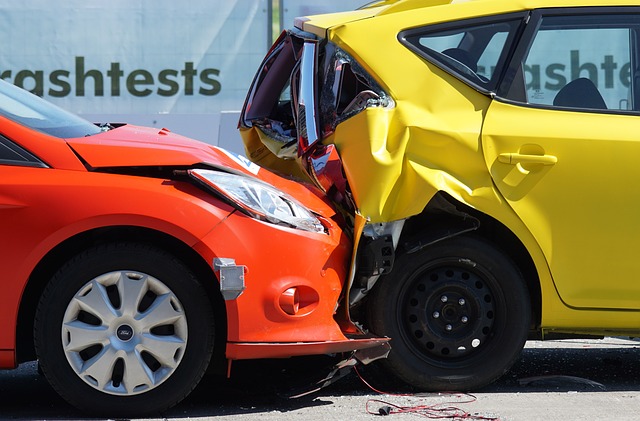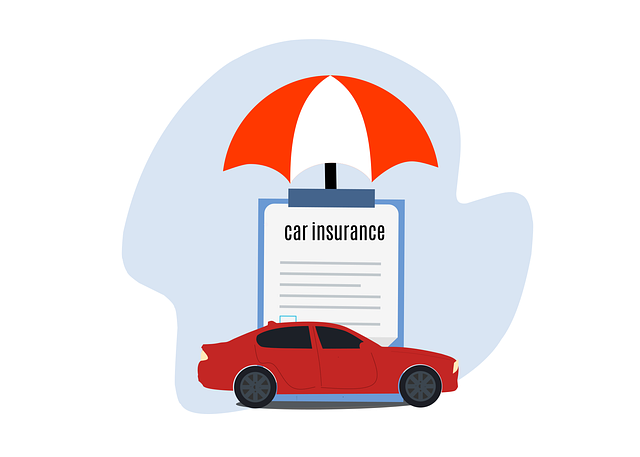Collision coverage protects drivers from unexpected vehicle damage caused by accidents, covering repairs up to a car's actual cash value minus a deductible. It's crucial in light of rising repair costs for modern vehicles with complex electronics. Collision insurance distinguishes itself from comprehensive insurance, which covers broader perils like theft and natural disasters, by focusing on accident-related damages including towing and rental cars. Understanding collision coverage, navigating claims, and tailoring policies based on vehicle age, condition, and driving habits is essential for informed decision-making and financial protection during accidents.
In an era where car insurance policies seem as diverse as the vehicles on the road, collision coverage stands out as a vital component for every driver’s protection. As we navigate the complex landscape of 2024, with rising collision repair costs posing a financial burden, understanding this specific insurance type is more crucial than ever. This article aims to demystify collision coverage, offering insights into its benefits, recent trends, and why it’s essential for both new and old vehicles. From decoding policy details to navigating claims, we’ll equip readers with the knowledge needed to make informed decisions about their collision insurance needs.
- Understanding Collision Coverage: What It Covers
- The Rising Costs of Collision Repairs in 2024
- Collision Insurance vs. Comprehensive Insurance
- Why Collision Insurance Matters for All Vehicles
- Navigating Collision Claims: Tips and Best Practices
- How to Choose the Right Collision Insurance Policy
Understanding Collision Coverage: What It Covers

Collision coverage is designed to protect you financially when your vehicle experiences non-deliberate damage due to a collision with another object, such as another car, a tree, or a fence. This type of insurance policy pays for repairs to your vehicle, up to its actual cash value (ACV), minus your deductible. The ACV is determined by factors like the make, model, and year of your car, and can be influenced by its overall condition and mileage.
What sets collision coverage apart from other forms of auto insurance is its specific focus on accident-related damages. It covers repairs to major components such as the engine, transmission, body panels, and frame. Additionally, it may include costs for towing, rental cars while your vehicle is being repaired, and in some cases, even roadside assistance services. Understanding what collision coverage entails can help drivers make informed decisions about their insurance needs, especially given the rising costs of car repairs in recent years.
The Rising Costs of Collision Repairs in 2024

The rising costs of collision repairs in 2024 present a compelling case for why collision coverage is more important than ever. Modern vehicles are increasingly complex, with advanced electronics and intricate mechanical systems that can lead to higher repair bills when damaged. According to industry reports, the average cost of auto body repairs has increased by over 15% in the past year alone, with some parts, like sensors and computer modules, adding significant expenses to the overall repair tab.
This trend is not limited to new cars; older vehicles also face substantial costs when involved in accidents. As parts become scarce or obsolete, replacement prices can skyrocket, making collision coverage a crucial safety net. With these escalating repair costs, having collision insurance can be the difference between paying a minor deductible and being faced with a substantial out-of-pocket expense for repairs that might leave your vehicle less safe to drive.
Collision Insurance vs. Comprehensive Insurance

Collision insurance and comprehensive insurance are two distinct types of vehicle coverage, each with its own strengths and weaknesses. While collision insurance specifically covers repairs resulting from accidents, comprehensive insurance encompasses a broader range of perils, including theft, vandalism, natural disasters, and damage from falling objects. The former is particularly valuable for drivers who frequently face fender benders or live in areas prone to collisions, as it can significantly reduce out-of-pocket expenses for repair bills. On the other hand, comprehensive insurance may be overkill for occasional drivers or those with older vehicles whose replacement value has declined substantially, as it often comes with higher premiums for seemingly less immediate protection against non-accident-related damages.
Why Collision Insurance Matters for All Vehicles

Collision insurance plays a pivotal role in protecting your financial well-being, regardless of your vehicle’s age or usage frequency. While it might be tempting to skip this coverage if you drive an older car or aren’t on the road much, unexpected accidents can occur at any time and often result in substantial repair costs. Even minor fender benders can lead to expensive repairs that might strain your budget if not adequately insured.
Moreover, with rising repair costs in recent years, collision insurance acts as a buffer against these financial burdens. It covers the cost of fixing or replacing your vehicle after a collision, providing peace of mind and ensuring you’re not left with a significant out-of-pocket expense when an accident strikes. This is especially crucial for those who rely on their vehicles for daily commuting or have limited options for alternative transportation.
Navigating Collision Claims: Tips and Best Practices

Navigating collision claims can be a daunting process, but with the right preparation, it can become much smoother. First, ensure you have all necessary documentation ready, including your policy details, vehicle registration, and proof of insurance. After an accident, exchange information with the other driver involved, such as their name, contact details, and insurance provider. Next, report the incident to your insurance company promptly, providing them with accurate details of what happened. Keep records of all communications and documents related to the claim.
When it comes to repairs, consider using a trusted repair shop that has a good reputation for handling collision damage. Your insurance company may provide a list of preferred shops or have specific guidelines for approved repair facilities. It’s essential to get estimates from multiple shops to ensure you’re getting fair pricing. Lastly, stay informed about your rights and responsibilities during the claims process. Understanding what’s covered under your policy and what expenses you might be responsible for can help you make informed decisions and avoid unnecessary stress.
How to Choose the Right Collision Insurance Policy

When selecting a collision insurance policy, start by assessing your vehicle’s age and condition. For newer cars, while they may be more expensive to insure, comprehensive coverage can offer peace of mind, ensuring you’re protected against unexpected repair costs. Older vehicles, however, might benefit from comparing policies that cater to their specific needs, as some insurers provide discounts for older cars with lower repair values.
Consider your driving habits and frequency. If you’re a careful driver with few accidents, a basic collision policy may suffice. But if your driving history indicates higher risk or you frequently encounter hazardous road conditions, opt for a more comprehensive coverage to avoid hefty deductibles and out-of-pocket expenses during claims.
In today’s world, where vehicle accidents are inevitable, having collision coverage is no longer an option but a necessity. By understanding what this type of insurance covers and recognizing the rising costs of repairs, drivers can make informed decisions. Whether you own a new or older car, collision insurance provides peace of mind and financial protection against unexpected events. It’s crucial to compare policies, consider your driving habits, and follow best practices when filing claims to ensure you’re adequately covered without overspending.



